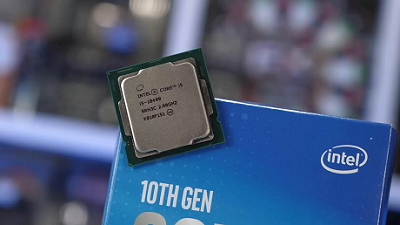Do you need to buy a Core i9 for gaming, and is a Core i3 sufficient for general desktop work? How about upgrading to a Core i5 if it's only $50 more, and how much faster is that going to be? Generally speaking, our CPU reviews provide more than enough data to answer those questions and then some. In addition, TechSpot's easy to follow Best CPUs guide is regularly updated, so you simply get what you need to know to make an informed buying decision. With that said, this review will serve as a great reference for those wanting to compare Intel Core i3, i5, i7, and i9 processors directly, and what you get on each jump. It’s rare for us to feature all these processors in a single review since they aim at different market segments and budgets. For example, when reviewing the Core i3-10100, none of the Core i7 or i9 processors were included, as $400+ parts aren’t usually relevant when reviewing an entry-level $100 CPU, so we opt to remove them in an effort to declutter the graphs. Having recently provided a similar overview for AMD's 3rd-gen Ryzen range, it was only logical we did the same for Intel, considering the 10th-gen CPUs have only been out for a few months. Intel lists 17 individual ‘standard power’ 10th-gen Core desktop processors, though in reality there’s just a handful of unique models. For example, there are two distinct Core i9 models, the 10900 and the 10900K, but each has an alternate version without the integrated graphics -- dubbed the 10900F and 10900KF. But let’s start from the bottom and work our way up. The 10th-gen Core i3 range is quite interesting, all models feature 4 cores and 8 threads thanks to Hyper-Threading support. The base i3-10100 model operates at a base frequency of 3.6 GHz with a max turbo of 4.3 GHz and packs a 6 MB L3 cache. Then there’s the Core i3-10300 which gets a 100 MHz frequency bump plus a larger 8 MB L3 cache. Finally, the most powerful Core i3 model available right now is the 10320, which runs at even higher clock speeds, boosting the base to 3.8 GHz and the max turbo to 4.6 GHz. To represent the Core i3 range today we'll be using the Core i3-10100. The 10th-gen Core i5 series consists of the 10400, 10400F, 10500, 10600, 10600K, and the 10600KF as shown in the table below. The six models feature 6 cores, 12 threads, and a 12MB L3 cache. The non-K models are rated with a 65-watt TDP while the unlocked K SKUs pack a 125-watt TDP. The difference between the 10400, 10500, and 10600 is 200 to 300 MHz, that’s it, and since they’re locked parts you won’t be able to change that. The 10600K and its F variant are fully unlocked, provided you’re using a Z-series motherboard, they can be overclocked. Complete details, along with images, and benchmarks can be found on OUR FORUM.
